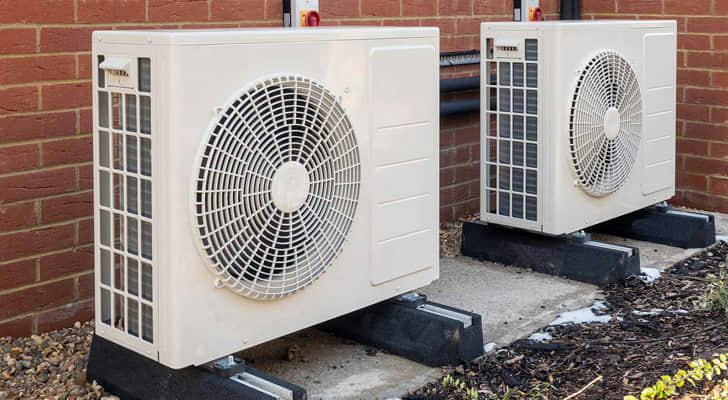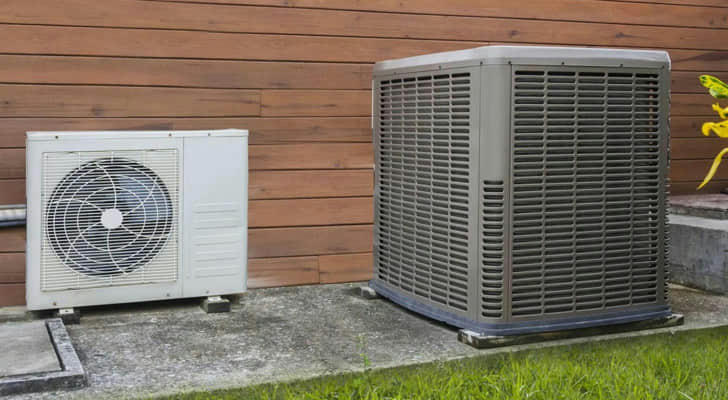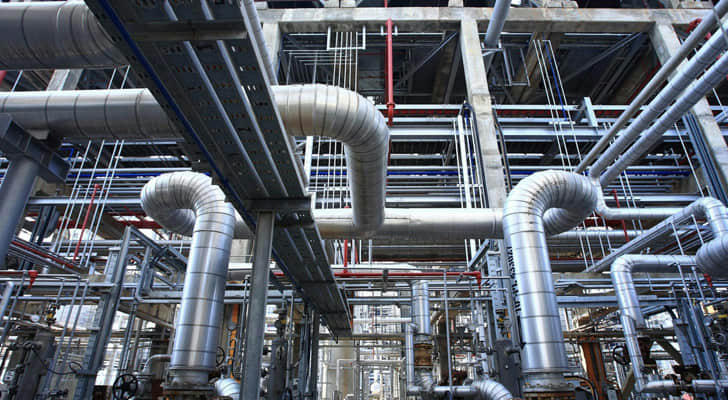Heat Pumps: A High-Efficiency Solution for Heating and Cooling

Introduction
Traditional heating and cooling systems, like electric heaters and air conditioners, often waste energy and harm the environment. Heat pumps offer a more efficient and eco-friendly alternative, making them a great option for homes and businesses. A heat pump works by moving heat from one place to another, allowing it to heat or cool a space as needed. This article explains how heat pumps work, their different types, benefits, and uses, and looks at their future potential.

Basic Theory of Heat Pumps
1. How Heat Pumps Work
Heat pumps use a system that moves heat instead of generating it. They can transfer heat from the air, water, or ground into a building, or remove heat from inside to cool it. This process happens in four steps: evaporation, compression, condensation, and expansion. By reversing the flow of heat, the same device can provide both heating and cooling.
2. Energy Efficiency (COP)
The efficiency of a heat pump is measured by something called COP (Coefficient of Performance). It shows how much heating or cooling the pump provides compared to the energy it uses. The higher the COP, the more efficient the heat pump is. For example, a COP of 3 means the heat pump produces three times more heat than the energy it consumes.
Types of Heat Pumps
1. Air Source Heat Pumps (ASHP)
Air source heat pumps use the outside air to either heat or cool your home. They are best suited for areas with mild climates.
How It Works: The system takes heat from the air and transfers it indoors. In hot weather, it works in reverse, pulling heat out of your home.
Advantages: These systems are energy-efficient and environmentally friendly, using less electricity compared to traditional systems.
2. Water Source Heat Pumps
These heat pumps use water from a lake, river, or underground source to heat or cool a building.
Water Use: By using a consistent water temperature, these pumps can be more efficient than air-based systems.
Environmental Concerns: They require access to a reliable water source and need to be managed carefully to avoid harming the local ecosystem.
3. Ground Source Heat Pumps (GSHP)
Ground source heat pumps, also called geothermal heat pumps, use the stable temperature of the earth for heating and cooling.
How It Works: Pipes are buried in the ground to absorb heat in the winter and release heat in the summer. These systems are highly efficient and provide reliable energy.
Cost and Stability: Though more expensive to install, they offer long-term savings and need little maintenance.
4. Absorption Heat Pumps (AHP)
These pumps use heat from natural gas, propane, or solar energy to operate, rather than electricity.
Best Uses: Absorption heat pumps are often used in large commercial or industrial buildings where waste heat can be reused.
Efficiency: They are particularly useful in settings where electric power is limited or expensive.

Benefits of Heat Pump Technology
1. High Energy Efficiency
Heat pumps use less energy than traditional heating systems. They pull heat from the environment (air, water, or ground), which means they consume less electricity to provide the same amount of heating or cooling. This can lower energy bills by up to 50%.
Comparison with Other Systems: Heat pumps are much more efficient than oil or gas heating systems, saving energy and reducing fuel use.
Environmental Impact: This efficiency also means fewer carbon emissions, helping to protect the environment.
2. Environmentally Friendly
Heat pumps reduce your carbon footprint by using renewable sources of energy, like the air or ground.
Reduced Emissions: Heat pumps use less electricity and can be powered by renewable energy, like solar or wind, making them a green choice.
Sustainable Development: Using heat pumps helps promote cleaner energy and supports a more sustainable future.
3. Versatility
Heat pumps provide both heating and cooling, so they work year-round.
Dual Function: Heat pumps can replace both your furnace and air conditioner, making them a convenient, all-in-one solution.
Hot Water Supply: Many heat pumps can also provide hot water for your home, increasing their usefulness.
Applications of Heat Pump Technology
1. Residential Heating and Cooling
More homeowners are choosing heat pumps for their homes because they save energy and provide comfortable temperatures throughout the year.
Example: A family in a suburban home installed a ground source heat pump. Within the first year, they saw a 50% reduction in their heating bills and found the system kept the temperature more consistent.
Customer Experience: Users report better air quality, lower energy bills, and a more comfortable living environment.
2. Commercial Buildings
Large buildings, such as malls and offices, benefit from heat pumps because they can reduce energy costs and provide consistent heating and cooling.
Central Heating and Cooling Systems: Heat pumps can be part of a building’s central HVAC system, making it easier to manage temperatures over large areas.
3. Agricultural Uses
Heat pumps are useful on farms for heating greenhouses and barns, and for drying crops.
Greenhouse Heating: They maintain the perfect temperature for plant growth without using as much energy as traditional methods.
Drying Crops: Farmers use heat pumps to dry crops more efficiently, saving both time and energy.
4. Industrial Applications
Factories and industrial plants use heat pumps to recycle waste heat and provide heating and cooling for various processes.
Heat Recovery: Factories can capture and reuse waste heat for other processes, making operations more energy-efficient.

Market Overview and Future Trends
1. Global Market Growth
The global heat pump market is expanding quickly due to the push for clean energy and government support.
Increased Demand: Countries around the world, including China, are adopting heat pumps because of government incentives and a growing focus on environmental protection.
Government Support: Many countries offer tax breaks or financial support to encourage people and businesses to use heat pumps.
2. Technological Advancements
Innovations in heat pump technology are focusing on improving performance and making them smarter.
High-Temperature Heat Pumps: Researchers are developing heat pumps that can operate at higher temperatures, making them suitable for more industries.
Smart Control: New technologies allow heat pumps to be controlled remotely, improving their efficiency and making them easier to use.
3. Future Outlook
As more people focus on building green and reducing carbon emissions, the use of heat pumps is expected to grow.
Renewable Energy Integration: Future heat pump systems may combine with other renewable energy sources, such as solar panels, to further reduce energy use.
Challenges and Solutions
1. High Initial Costs
Although heat pumps are more expensive to install than traditional systems, the savings on energy bills make up for the initial cost over time.
2. Cold Weather Efficiency
Heat pumps can be less efficient in very cold climates, but newer models and hybrid systems (which use a backup heat source) are addressing this issue.
3. Maintenance and Support
Regular maintenance is necessary to keep heat pumps running smoothly. More widespread service networks and better customer support can help solve any problems that arise.
Conclusion
Heat pumps are a key part of the shift toward cleaner, more efficient energy systems. With their high efficiency, environmental benefits, and multiple uses, they are helping reduce carbon emissions and save energy costs for homes and businesses alike. As technology advances and more governments encourage their use, heat pumps are set to become a common solution for heating and cooling worldwide.
Their ability to lower energy bills, reduce environmental impact, and provide year-round comfort makes them a crucial tool in the move towards a more sustainable future. Continued innovation and support will only make heat pumps more effective and widely adopted.
